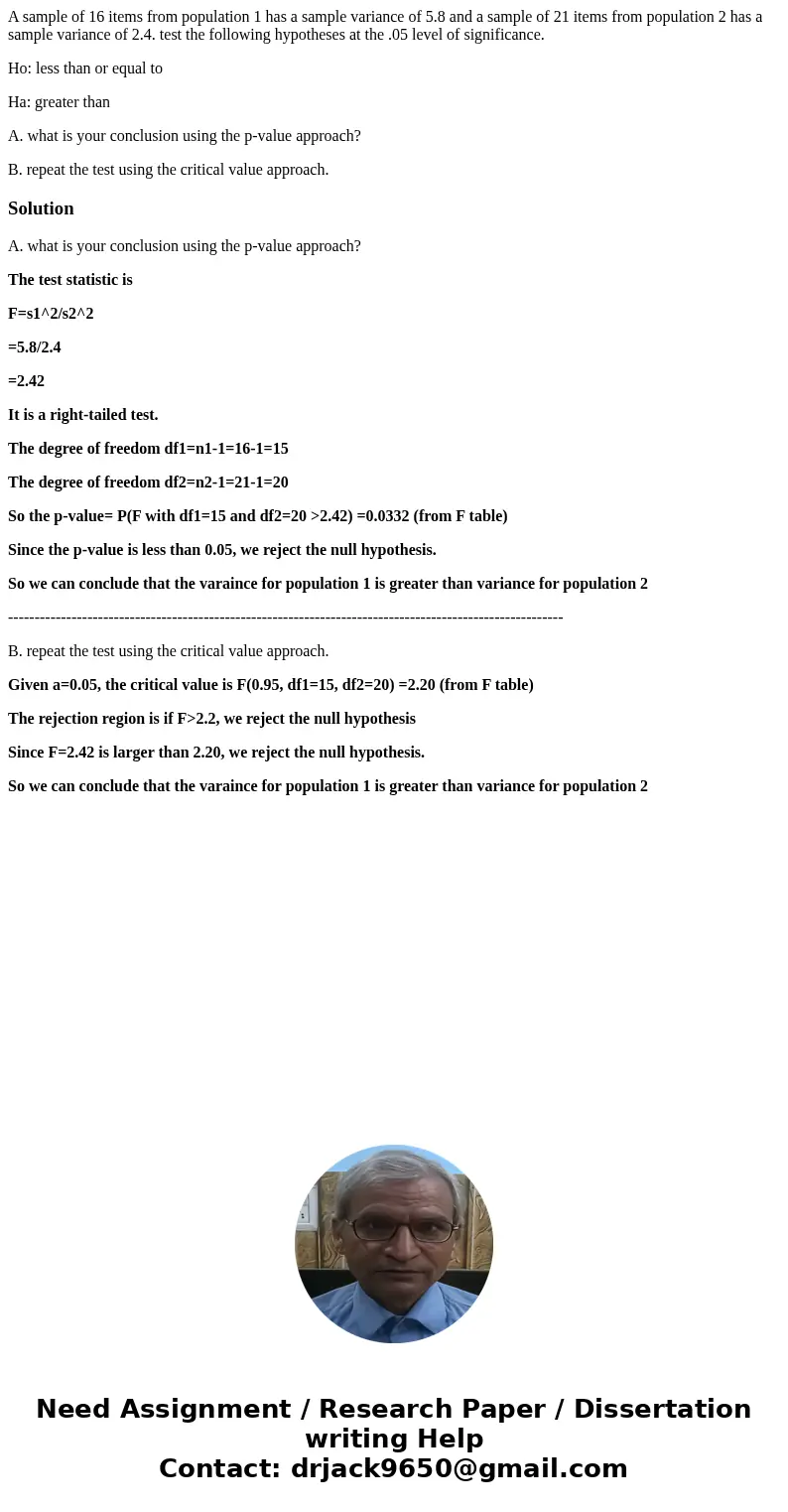A sample of 16 items from population 1 has a sample variance
A sample of 16 items from population 1 has a sample variance of 5.8 and a sample of 21 items from population 2 has a sample variance of 2.4. test the following hypotheses at the .05 level of significance.
Ho: less than or equal to
Ha: greater than
A. what is your conclusion using the p-value approach?
B. repeat the test using the critical value approach.
Solution
A. what is your conclusion using the p-value approach?
The test statistic is
F=s1^2/s2^2
=5.8/2.4
=2.42
It is a right-tailed test.
The degree of freedom df1=n1-1=16-1=15
The degree of freedom df2=n2-1=21-1=20
So the p-value= P(F with df1=15 and df2=20 >2.42) =0.0332 (from F table)
Since the p-value is less than 0.05, we reject the null hypothesis.
So we can conclude that the varaince for population 1 is greater than variance for population 2
---------------------------------------------------------------------------------------------------------
B. repeat the test using the critical value approach.
Given a=0.05, the critical value is F(0.95, df1=15, df2=20) =2.20 (from F table)
The rejection region is if F>2.2, we reject the null hypothesis
Since F=2.42 is larger than 2.20, we reject the null hypothesis.
So we can conclude that the varaince for population 1 is greater than variance for population 2

 Homework Sourse
Homework Sourse